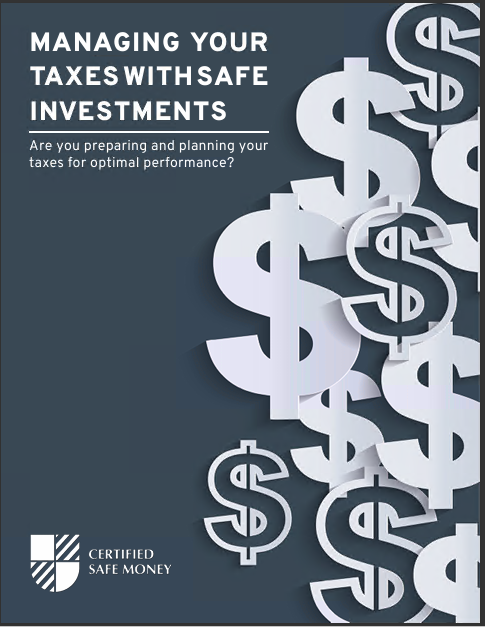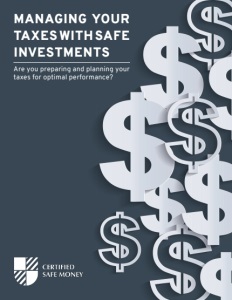Key Takeaways
-
Fixed Index Annuities (FIAs) offer a secure way to grow your retirement savings while protecting your principal from market downturns.
-
When used correctly, FIAs can provide a stable income stream, making them a valuable addition to your retirement strategy.
Understanding Fixed Index Annuities
Retirement planning can feel overwhelming, especially with the endless options available. Fixed Index Annuities (FIAs) are a retirement tool that often gets overlooked, yet they offer unique benefits worth exploring. At their core, FIAs are a type of insurance product designed to provide a mix of growth potential and financial security.
An FIA links your returns to the performance of a stock market index, like the S&P 500, without directly investing your money in the market. This means your principal is safe from market losses, giving you peace of mind while still allowing for growth opportunities.
How Fixed Index Annuities Work
Linking to Market Performance
The standout feature of an FIA is its ability to tie your returns to a market index. This connection allows for growth during strong market years while capping potential losses during downturns. However, don’t expect to see the same high returns you might get from direct stock market investments. Instead, you’ll benefit from a steady growth approach that prioritizes safety over aggressive gains.
Growth and Protection
FIAs often come with a cap rate and a participation rate. The cap rate limits the maximum return you can earn in a given year, while the participation rate determines the percentage of the index’s growth you’ll receive. For example, if your FIA has a cap rate of 5% and the index grows by 7%, your return for that year will be capped at 5%.
Tax Advantages
Another key benefit of FIAs is their tax-deferred growth. You won’t pay taxes on your gains until you start withdrawing funds, which can help your savings grow faster over time.
Benefits of Fixed Index Annuities
Stability in Volatile Markets
One of the primary reasons people choose FIAs is their stability. Unlike direct stock market investments, your principal remains untouched during market downturns. This makes FIAs particularly appealing for those nearing retirement who want to preserve their nest egg.
Guaranteed Income Stream
FIAs can convert your savings into a guaranteed income stream, ensuring you have regular payments throughout retirement. This feature can be especially useful in managing longevity risk—the possibility of outliving your savings.
Flexibility
FIAs offer a range of options to suit different needs. Whether you’re looking for immediate income or want to defer payments for a few years, there’s likely an FIA tailored to your situation.
Potential Drawbacks to Consider
Limited Liquidity
FIAs are not as liquid as other investment options. If you withdraw funds before the end of the surrender period (often 5-10 years), you’ll face steep penalties. This makes it crucial to ensure you won’t need access to these funds for a significant amount of time.
Caps and Participation Rates
While caps and participation rates offer protection, they also limit your earning potential. In strong market years, you may feel like you’re missing out on higher returns.
Complexity
FIAs can be complicated, with many terms and conditions to understand. It’s important to read the fine print and consult a financial advisor to ensure the product aligns with your goals.
Is an FIA Right for You?
Your Risk Tolerance
FIAs are ideal for those who prioritize financial security over high-risk, high-reward strategies. If you’re closer to retirement or have a low tolerance for market volatility, an FIA can provide the stability you’re looking for.
Your Retirement Goals
Consider your retirement income needs. If you want a guaranteed income stream to cover essential expenses, an FIA can be a reliable choice. On the other hand, if you’re focused on maximizing returns and are comfortable with market risks, you might explore other investment options.
Key Features to Look For
Surrender Periods
Pay close attention to the surrender period and the associated fees. Shorter surrender periods offer more flexibility but may come with lower benefits.
Income Riders
Some FIAs offer optional income riders for an additional cost. These riders guarantee a certain income level, even if your account balance is depleted.
Death Benefits
Many FIAs include death benefits, allowing your beneficiaries to receive the remaining account value. This feature can provide additional peace of mind for your loved ones.
Tips for Using FIAs Effectively
Diversify Your Portfolio
Don’t put all your eggs in one basket. Use FIAs as part of a diversified retirement strategy that includes other investments like stocks, bonds, and mutual funds.
Understand the Terms
Always read the fine print. Know your cap and participation rates, surrender charges, and any additional fees. Transparency is key to making an informed decision.
Plan Your Withdrawals
To avoid penalties, plan your withdrawals carefully. Use the guaranteed income stream to cover essential expenses while keeping other investments liquid for unexpected costs.
When to Avoid Fixed Index Annuities
FIAs aren’t for everyone. If you’re younger and have a long time horizon, you might prefer investments with higher growth potential. Similarly, if you need quick access to your funds, the lack of liquidity makes FIAs less appealing.
The Cost Factor
While FIAs don’t typically have direct fees like mutual funds, they do have indirect costs such as cap rates and participation limits. Additionally, optional riders and features may come with extra charges. Always weigh these costs against the benefits to determine if an FIA is worth it for you.
Making the Most of FIAs in 2025
With financial markets continuing to fluctuate, FIAs offer a safe harbor for those seeking stability in uncertain times. The combination of tax-deferred growth, market-linked returns, and guaranteed income makes them a versatile tool for retirement planning in 2025.
Secure Your Retirement with Confidence
Fixed Index Annuities can be a game-changer for your retirement strategy when used thoughtfully. By understanding their benefits and limitations, you can decide if they’re the right fit for your financial goals. Take the time to evaluate your options, consult with experts, and create a plan that ensures your retirement is as stress-free as possible.













